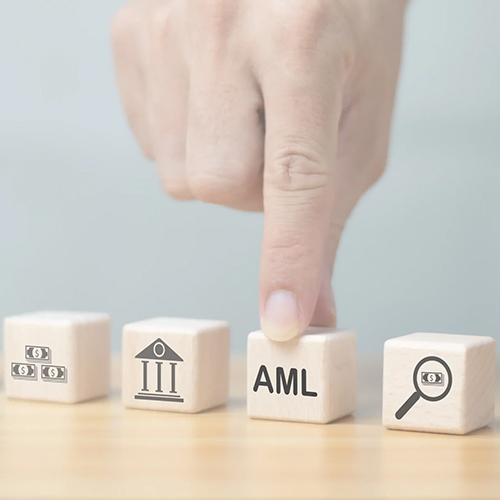In today's evolving financial landscape, financial crimes like money laundering and terrorist financing are increasing. This blog explores AML risk assessment, its importance, and steps to develop an effective AML risk assessment framework. It highlights the need for banks to identify and mitigate risks using strategies like Customer Due Diligence and Enhanced Due Diligence.
In the modernizing financial services landscape, the risks of financial crimes such as money laundering and terrorist financing have increased substantially. For instance, Fintech innovations like digital payment systems allow convenient monetary transactions, nearly anytime and anywhere globally, with more flexibility and access. Fraudsters and criminals exploit vulnerabilities in these evolving systems to launder illicit funds, concealing the source of money.
Financial institutions must detect and evaluate these anti-money laundering (AML) risks and build counter capabilities.
This blog explains AML risk assessment, its importance, types, and the steps to developing an AML risk assessment framework.
Key Takeaways:
- AML risk evaluation is crucial for identifying and mitigating the risks of financial crimes, uncovering weaknesses in internal controls, and ensuring a robust compliance framework.
- Building an effective framework involves identifying inherent risks, implementing control measures, and continuously monitoring and reviewing of internal controls.
What is AML Risk Assessment?
AML risk assessment is a process to evaluate and analyze the potential involvement of a customer or entity in financial crimes, such as money laundering and financing of terrorism. AML risk assessment is one of the most crucial and integral aspects of the AML compliance program and risk-based approach (RBA) to managing financial crimes.
With AML risk evaluation, banks and financial institutions can efficiently identify, analyze, and mitigate potential money laundering and terrorist financing risks.
Banks and financial institutions can follow the guidelines and instructions that are regularly shared and updated by regulatory bodies, such as the Financial Action Task Force (FATF), to conduct risk assessments. This can help financial institutions identify and combat financial crime activities and protect their business and themselves from unintentionally participating in or facilitating financial crimes or illegal activities.
Importance of AML Risk Assessment
Several reasons make AML risk assessment crucial for financial institutions across the globe. It helps banks and financial institutions:
- Identify and assess the risks associated with money laundering and terrorist financing
- Ensure robust AML compliance processes
- Identify the AML risks and weaknesses in products, services, internal controls, operations, and processes
- Determine and eliminate high-risk customers
- Develop appropriate controls and risk mitigation strategies
Types of AML Risk Assessments
AML risk assessment is categorized into four types to address the specific and distinct money laundering risks.
1. Customer Risk Assessment
This category evaluates money laundering risks associated with an individual customer. For example, individuals, such as non-resident aliens, politically exposed persons (PEPs), and professional service providers pose a higher risk. This includes analyzing:
- Transaction history
- Customer behavior
- Transaction patterns
2. Product and Services Risk Assessment
This category evaluates the risks associated with specific financial or non-financial products or services offered by a bank or financial institution, that can inadvertently assist criminals in money laundering or terrorist financing activities. Criminals may also exploit these products and services to launder illicit funds. For example,
- Cryptocurrency
- E-Wallets
- Digital payments
- Gambling services
- ATM/cash services
- Currency exchanges
3. Geographical Risk Assessment
This assessment considers money laundering risks associated with businesses in specific countries or regions. Geographical risk assessment considers factors such as:
- Regulatory laws
- Industry standards
- Political stability
- Corruption
4. Business Risk Assessment
This category involves the assessment of money laundering risks associated with corporate clients and businesses for these factors:
- Ownership
- Business operations and activities
- Industry
- Distribution and payment channels
- Customer base
Steps for Building an Effective AML Risk Assessment Framework
AML risk assessment is important for regulatory compliance and protecting a business and its reputation. It includes KYC processes, such as Customer Due Diligence (CDD), Enhanced Due Diligence (EDD), and Transaction Monitoring, to evaluate customer identities and risk profiles and monitor their activities. An AML risk assessment framework can help financial institutions curtail suspicious activities, such as money laundering or terrorist financing, proactively.
Below are the steps banks and financial institutions can follow for conducting effective AML risk assessment and compliance risk management.
Step 1: Identify Inherent Risks
Inherent risks are the risks posed by an error or omission due to factors other than a failure in internal control measures. It represents the financial institutions’ exposure to money laundering risk if not dealt with. Therefore, banks and financial institutions must:
- Identify the inherent risks
- Organize them into weak, intermediate, and strong categories
Step 2: Implement Risk Controls
After identifying the inherent risks and residual risks, financial institutions can implement risk mitigation controls to address these risks. These controls will help:
- Reduce the likelihood of illicit activities, such as money laundering and terrorist financing
- Uphold a robust AML compliance program
- Ensure adherence to rules and regulations
Step 3: Monitor and Review the Residual Risks
After implementing the risk controls, it’s important to continuously monitor and review residual risks to strengthen the AML risk assessment program. Residual risk refers to risks that remain after implementing the controls and procedures to mitigate or eliminate the high risks associated with the bank’s business processes, geographical locations, systems, customers, products, and services.
Banks and financial institutions must calculate and determine the residual risks. This can be done by subtracting the quality of risk management or the impact of risk controls from the inherent risk.
Residual Risk = Inherent Risk – Quality of Risk Management
Residual risk calculation helps:
- Identify the strengths and weaknesses of the existing risk management and control framework
- Acknowledge the existing risks
- Re-evaluate risk appetite
- Continuously incorporate or update risk controls and other processes to ensure a responsive AML compliance program that stays updated with the changes in regulations and industry standards
Expert Guidance for Evaluating AML Risks
AML risk assessment is vital for banks and financial institutions to comply with AML laws and regulations and mitigate the risks of money laundering and terrorist financing. If they fail, they may face litigations and penalties for regulatory violations that can lead to financial losses and reputational damages.
Anaptyss helps banks and financial institutions identify risks across products and services, customers, and locations to establish global AML control standards. We also help determine the effectiveness of existing internal preventative and detective AML risk controls.
To learn more, contact us at: info@anaptyss.com.

















